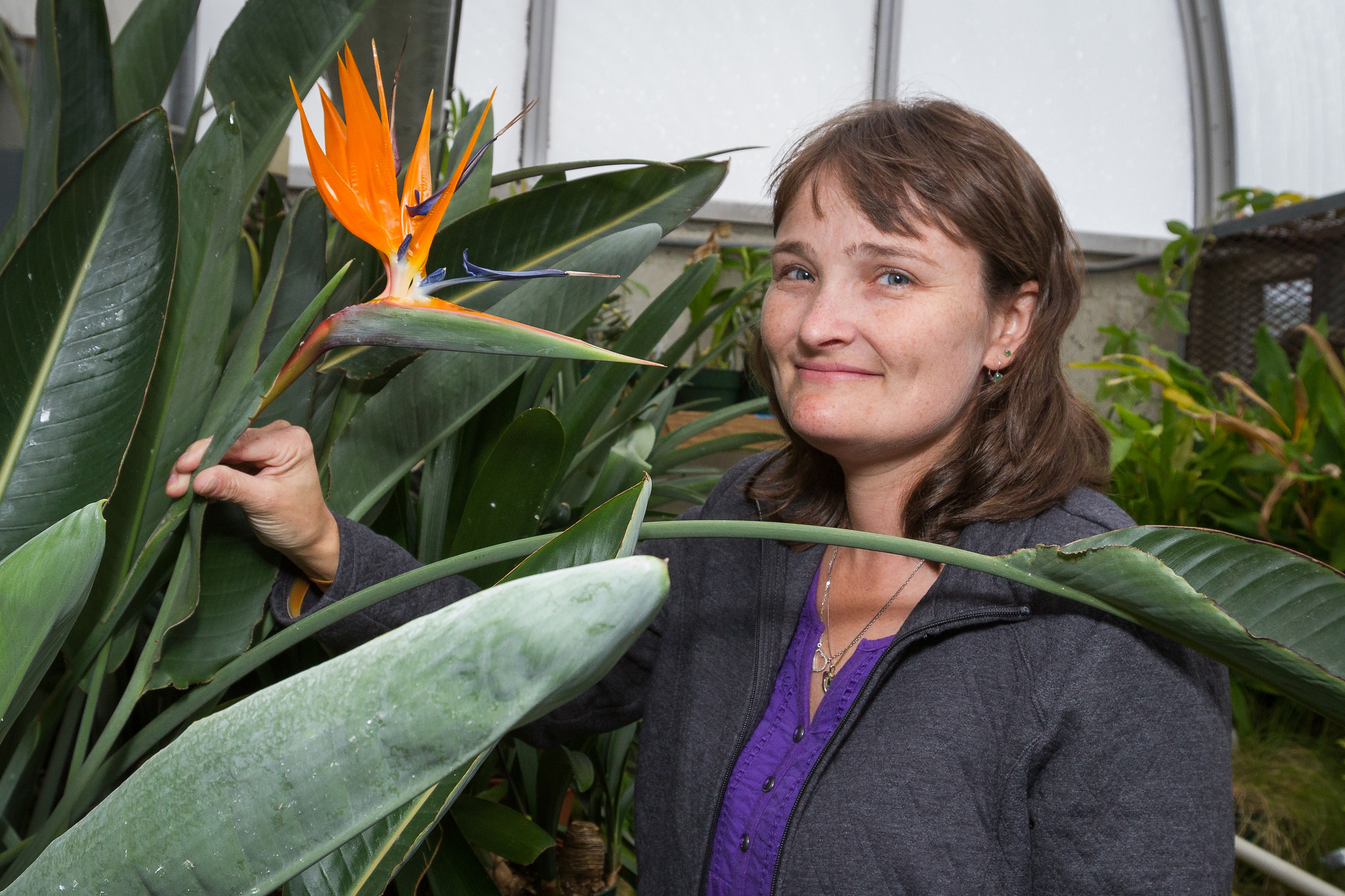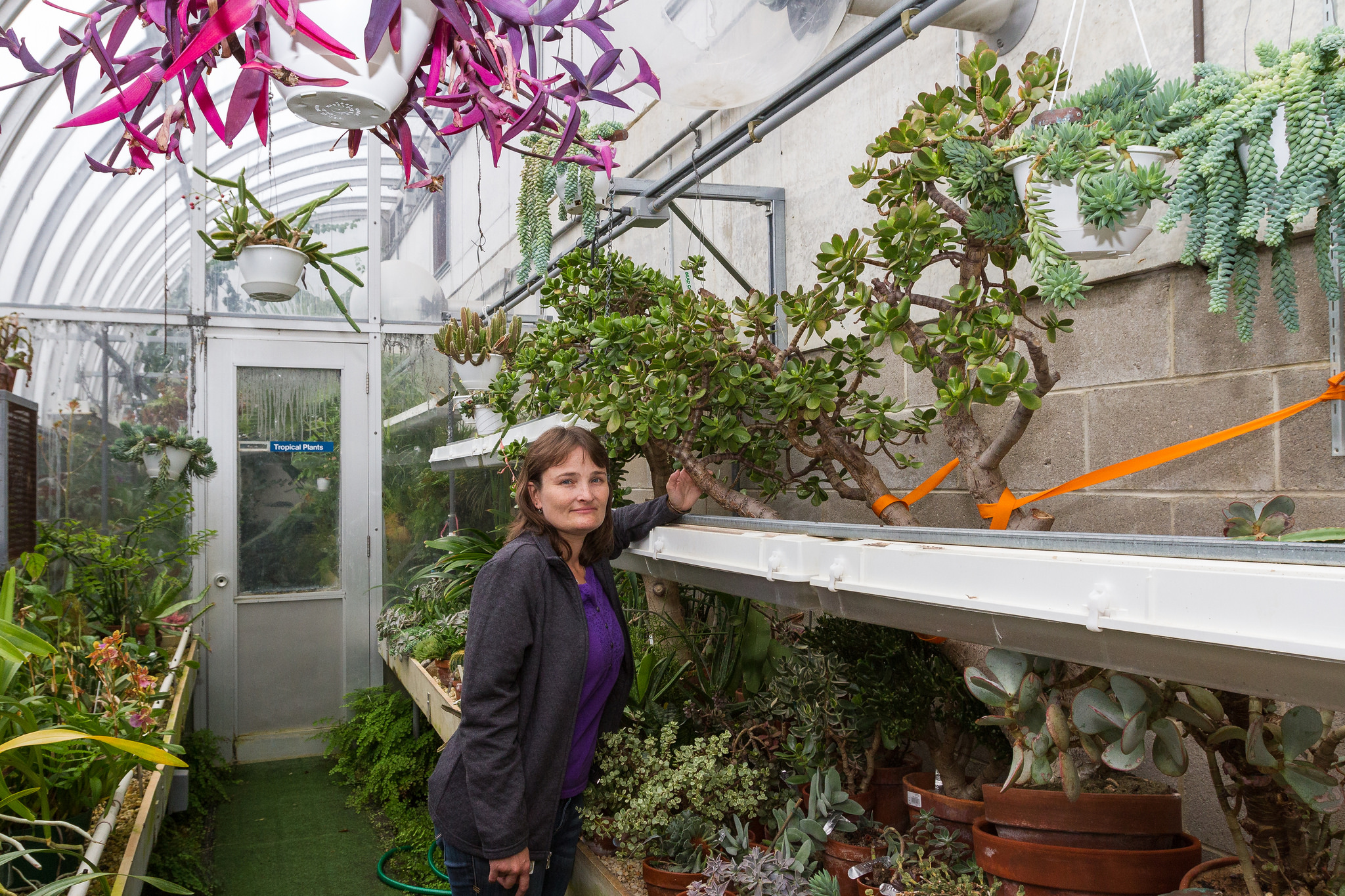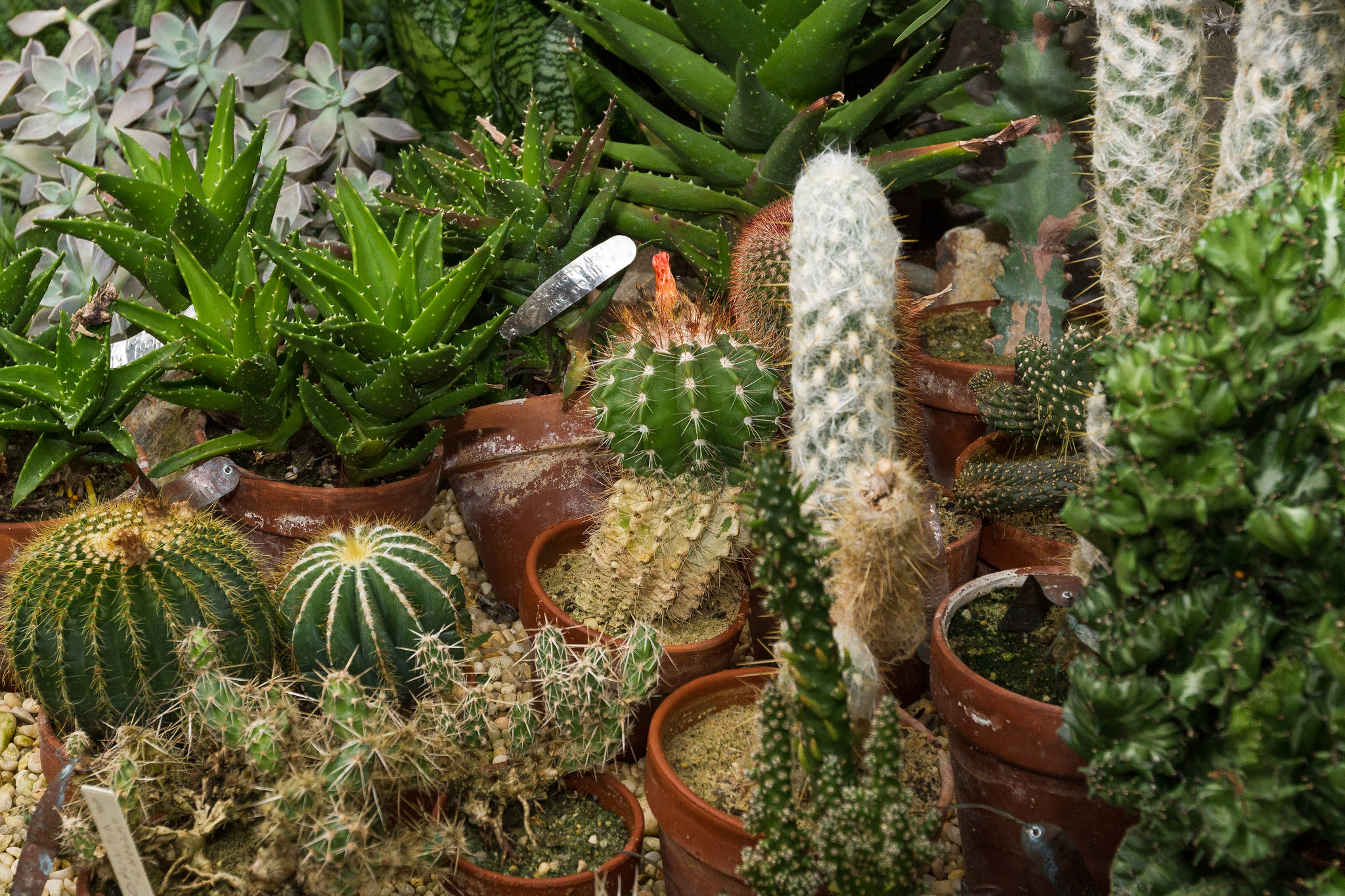Christine Schairer’s “second office” is a tropical microenvironment that always feels and looks like summer. The professional services specialist in the School of Natural Sciences and Mathematics curates and manages the care of more than 500 orchids, cacti, succulents and rare plants that grow in Stockton’s greenhouses.
“It’s my favorite place,” she said.
Sunlight pours through a translucent roof and vented windows feeding life to the tropical and temperate species and botany research projects located along College Walk in the F-Wing greenhouse. Off the second floor of the Arts and Sciences Building, a second greenhouse is used by Environmental Studies students and is home to Atlantic white cedar trees that Dr. George Zimmermann, professor of Environmental Studies, uses for his research.
Schairer first began working in the Stockton greenhouses as a Biology student in 1992 under former assistant director Nancy Burke. An 18-year-old jade plant that she started from a clipping as a student and its 30-year-old host plant remind her of the days when she took every botany class she could fit into her schedule.
Schairer also earned both undergraduate and graduate-level Education degrees from Stockton. Before returning to Stockton’s greenhouses as a full-time staff member, she worked for 12 years at Belhaven Middle School in Linwood as a paraprofessional in a self-contained classroom, as well as with special needs students who were mainstreamed.
The beautiful blooms that fill Stockton’s greenhouses are the result of hard work combatting algae, clover and pests, and careful monitoring of the sensitive environment.
A team of students works with Schairer to water, fertilize, prune, repot and control pests.
The temperature is kept at 68 degrees for the temperate species and 78 degrees for the tropical species such as the rare, leafless ghost orchid. For the month of January, watering is stopped to mimic desert conditions.
A number of Stockton’s orchids have been entered into competitions such as the Philadelphia and Ocean City Flower Shows earning a drawer-full of ribbons and sometimes beating commercially-grown plants.
Botany classes and students taking Biodiversity and Evolution often visit the greenhouses for tours and to work on research projects. “The students love it. They often say, ‘we walk by this all the time and never knew it was here,’” she said.
There is nothing else that compares to being in a world of green in the middle of a snowstorm Schairer said.
Her love for botany began unexpectedly with a single orchid. When she was 12 years old, her father brought her along on a trip to Waldor Orchids in Linwood to pick up a flower for his boss. Schairer remembers someone giving her an orchid corsage. “My dad made the biggest mistake of his life. I got hooked,” she laughed.
Very soon after, she became a founding member of the Sandpiper Orchid Society.
Schairer’s personal greenhouse is home to 200 orchids and succulents, but her fascination with orchids isn’t contained within greenhouses. Of the 28 native New Jersey orchids, Schairer has found 18 in the wild.
Schairer’s early interest in botany has only blossomed since coming to Stockton. Today, she passes on her knowledge to students keeping the art of horticulture alive and thriving.


